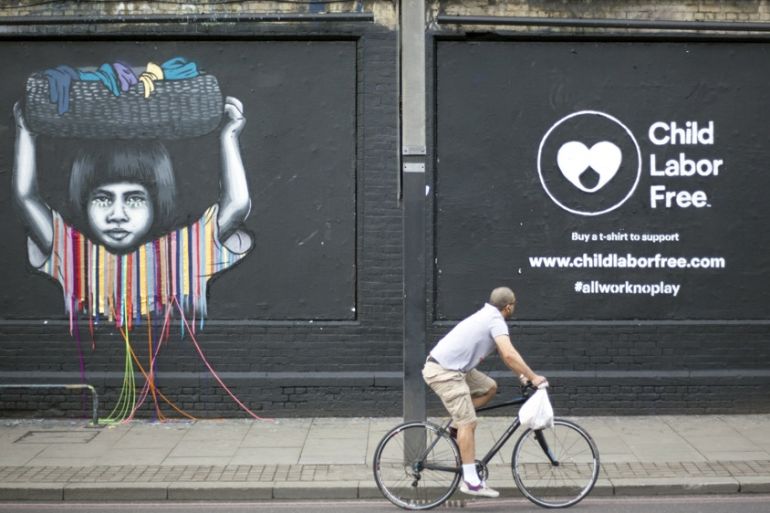By the numbers: World Day Against Child Labour
Around 152 million people under 18 are compelled to work worldwide, often in hazardous conditions.

June 12 is the World Day Against Child Labour.
Across the globe, some 218 million children between the ages of five and 17 are employed. This means that they work and may not receive an education. They often have no time to play and have no opportunity to do other activities more fitting for their age group.
Keep reading
list of 4 items‘We share with rats’: Neglect, empty promises for S African hostel-dwellers
Thirty years waiting for a house: South Africa’s ‘backyard’ dwellers
Photos: Malnutrition threatens future Afghan generations
More than half of them, 152 million, face the worst forms of child labour – including jobs in hazardous environments; slavery; illicit activities such as drug trafficking and prostitution; and participation in armed conflict.
According to the United Nations, child labour is “work carried out to the detriment and endangerment of a child, in violation of international law and national legislation. It either deprives children of schooling or requires them to assume the dual burden of schooling and work.”
The International Labour Organization (ILO) Programme on Child Labour aims to abolish child labour and is governed by the principles of the Minimum Age Convention and the Worst Forms of Child Labour Convention.
Of all child labour, 72.1 million cases are found in Africa, 62.1 million in Asia and the Pacific, 10.7 million in the Americas, 1.2 million in the Arab states, and 5.5 million in Europe and Central Asia.
Ranging from debt bondage to prostitution, child labour is considered “hazardous work” if it “jeopardises the physical, mental or moral well-being of a child, either because of its nature or because of the conditions in which it is carried out”, says the UN.
“Child labour to be eliminated” is a subset of all children in employment and includes work done by children under the minimum legal age for that type of work, as defined by international standards.
In September 2018, the US Department of Labor published the List of Goods Produced by Child Labor or Forced Labor, pinpointing specific industries where abuses most occur (the 25 million forced labourers worldwide are related to but separate from child labour).
The bar chart below depicts the number of countries – for each economic item – that appear on either list.
THREAD
Today is #WorldDayAgainstChildLabour
Did you know that
⚠152M children between ages 5-17 are victims of child labour
⚠ 47% of them are in Africa
⚠ 50%+ face the worst forms of child labour – including drug trafficking & prostitutionMore: https://t.co/JvVh9SgPRR pic.twitter.com/dIP383vkYA
— Al Jazeera English (@AJEnglish) June 12, 2019